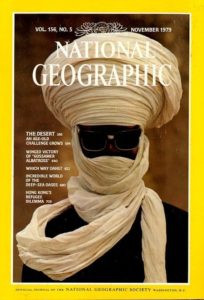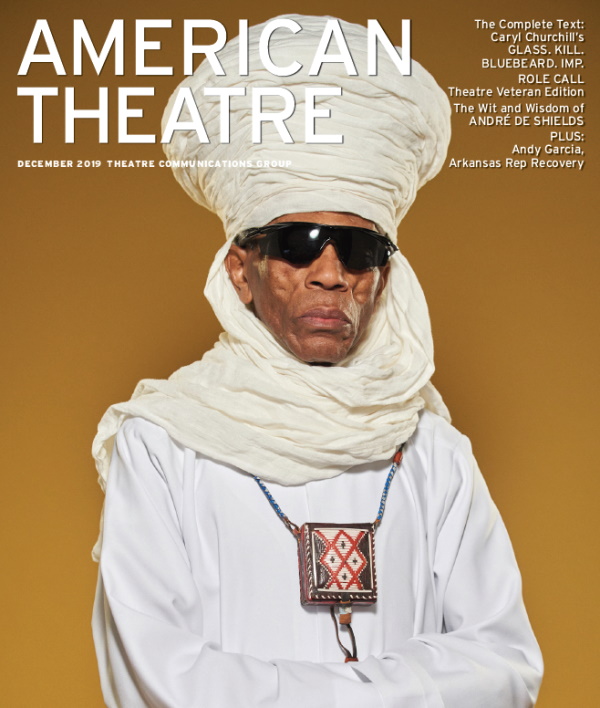The half-joking working title for this special issue has been “Wisdom of the Elders.” Over the years we have consciously styled our monthly Role Call feature as a way to celebrate more than just “new” or “upcoming” or “emerging” talents, but by its nature the column does inevitably put a lot of focus on younger or early-career artists. As we mulled doing an expanded version of Role Call, as we did last December, we wondered: What if we shone a spotlight exclusively on some of the established veterans who’ve given lifetimes of work, love, brainpower, and sweat to the theatre field while they’re still in the thick of it? The resulting compendium functions as a series of tributes to extraordinary dedication and perseverance, of course, but it also gave us a chance to glean some sense of what these folks have learned along the way and can pass on to succeeding generations of theatremakers.
Joan Channick, a professor of theatre administration at Yale I spoke to for a profile in this issue, told me that our proposed title gave her a good chuckle, because, as she put it, “I don’t consider myself wise, and I don’t think of myself as an elder.” Fair enough. One defining characteristic of folks who seem to flourish in their chosen field, both in the theatre and outside it, is an aliveness to the present moment, and an alertness to the next. Many if not most of our field’s longtime leaders possess the eternally youthful inquisitiveness and energy of lifelong students.
But the theatre field, like many public-facing endeavors and institutions in our culture, can be a bit youth-obsessed. While it’s certainly not true that young people have access to our field’s greatest resources or power—quite the contrary—it often seems that the field’s eyes, attention, and prestige are forever fixed on the new, the next, the novel. Meanwhile, there are folks who are no longer new to the field who still have much to offer it, not least their perspective, their witness. Every generation must, to some extent, relearn all the hard lessons firsthand, and a little reinventing of the wheel is inevitable (and often leads to new, undreamt-of inventions). But it is a shame, and a kind of erasure, not to give an ear to those who’ve been down these paths before, who know the bumps ahead as well as those behind, and who still have more to give.
 One unquestionably wise elder graces our cover. A word on the image: When we told the great André De Shields that he would be our subject, he told us he wanted to create something “iconic.” He sent us the cover of National Geographic from November 1979, a striking photo by George Gerster of a Tuareg man in Niger. De Shields told us he already possessed, and had frequently worn, a costume based on this image. The resulting cover, shot by Chad Griffith, shows more of its subject’s beautifully creased face than that of the man on the Nat Geo cover. But this is more than mere cross-cultural cosplay: As De Shields explains to Jose Solís in a stunning interview, “Humanity walked out of Africa. When you see me, see Africa. When you see Africa you’re looking at the world.” That’s not an elder statesman talking—more like a kind of living ancestor, like August Wilson’s Aunt Ester, who has absorbed the wisdom and power of all the mighty spirits who came before. We are called to listen, and one day, if we’re fortunate, to join them.
One unquestionably wise elder graces our cover. A word on the image: When we told the great André De Shields that he would be our subject, he told us he wanted to create something “iconic.” He sent us the cover of National Geographic from November 1979, a striking photo by George Gerster of a Tuareg man in Niger. De Shields told us he already possessed, and had frequently worn, a costume based on this image. The resulting cover, shot by Chad Griffith, shows more of its subject’s beautifully creased face than that of the man on the Nat Geo cover. But this is more than mere cross-cultural cosplay: As De Shields explains to Jose Solís in a stunning interview, “Humanity walked out of Africa. When you see me, see Africa. When you see Africa you’re looking at the world.” That’s not an elder statesman talking—more like a kind of living ancestor, like August Wilson’s Aunt Ester, who has absorbed the wisdom and power of all the mighty spirits who came before. We are called to listen, and one day, if we’re fortunate, to join them.


